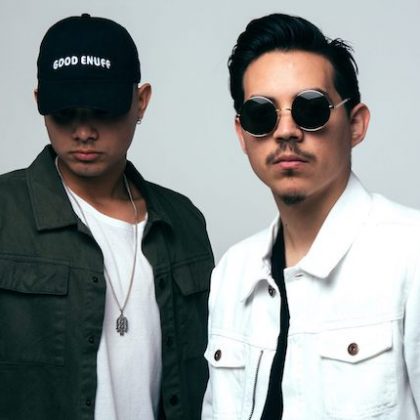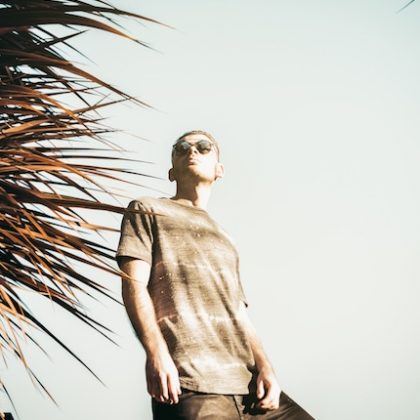Metronome #103: Gabriel & Dresden
Insomniac’s Metronome series features mixes from some of today’s fastest-rising electronic stars, as well as championed legends. It takes listeners deep across a wide range of genres, movements, cultures, producers, artists and sounds that make up the diverse world of electronic music.
Nowadays, so much time is spent chasing the latest trends that we seldom remember to honor the pioneers who made it all possible in the first place. Were it not for the work of Josh Gabriel and Dave Dresden—together known as Gabriel and Dresden—much of what has made dance music globally accessible might have never been a possibility.
Long before the electronic scene was legitimized as an actual art form, a young Dresden could be found dancing to pre-limelight Moby in Greenwich, Connecticut. Inspired by the sounds of new wave and early house music, his career as a local resident DJ quickly took off and landed him a spot among the fewer than 100 Stateside artists who helped create the weekly Billboard Hot Dance Club Songs chart. However, DJing wasn’t the only thing in his skill set, because he also clocked hours in radio, A&R and journalism.
On the other hand, Gabriel’s experimentation with sound synthesis and computers in the early ‘80s led him to create Mixman, software that allowed users to remix music in real-time. This early innovation helped streamline the audio production process and created a space for digital DJing, which would also serve as the foundation for the software found in every producer’s studio today.
When the two met in 2001, Dresden was working as an A&R talent scout for Pete Tong’s Essential Selection, having no idea that his chance encounter with Gabriel at that year’s WMC would lead to their first collaboration, an official remix for New Order. Through their combined experience, they went on to craft a sound that, while often mislabeled strictly as trance, would usher in an era of chart-topping, universally uplifting dance tracks. You’d be hard-pressed to find an old-school head who isn’t guilty of getting misty-eyed to timeless records such as “As the Rush Comes” or “Tracking Treasure Down.”
Once the popularity of trance fizzled out and started to give way to more mainstream-driven dance music, the duo began to drift apart creatively. However, after a three-year hiatus, they rediscovered their groove and have started tackling a new album. It’s being funded by their legions of fans, who came together to help Josh & Dave reach their Kickstarter funding goal three times over. With the official album launch party already on the books for May 18 at the Public Works in San Fran, we decided to catch up with the legends to find out where they’re headed.

At the start of your Classics tour in 2015, you stated you weren’t necessarily in the place to make music together again yet. What has changed that is allowing you to want to take on the huge feat of creating an album?
When we came back together at the start of 2011, it was almost by accident. Giant, the L.A. promoter, booked us to play a “reunion” show at the Hollywood Palladium for New Year’s Eve 2010. We hadn’t really talked a lot [since the official split], and we didn’t really have any plans of being an act again. But the excitement that was created from that show, between the fans and the industry, [led us to book] a full world tour, [with] no new music to back it up.
We attempted to make music whilst touring and signed a record deal with Armada, [but] the dance music industry was changing so fast, and not in the direction of the kind of music we like. We released seven singles with Armada, and none of them really connected with our fans or the industry at large. So, in 2014, we came up with the idea to do Classics Only.
Doing the Classics Only tour really reinvigorated us in terms of knowing who we were. Playing 4–7-hour sets nearly every weekend for a year of mainly our own music, or the music that inspired us, was such a breath of fresh air. We started to understand what made us special. We were [also] starting to hear new music [with] melody and emotion—stuff that made us really feel something. Techno DJs were playing trance classics. Trance music was becoming less formulaic; it started to feel like things were coming around again—not to mention Insomniac putting a lot of emphasis on their Dreamstate brand. There was a safe place for us again and people with open ears and hearts. The timing just feels right for us, and we feel inspired.
You were able to fund your Kickstarter at more than 200 percent. You even had two backers pledge $5K for a chance to sit in the studio with you and receive a cowriter credit. What do you think this has to say about the impact you’ve had on your fans over the years?
It says a lot, really. We’re kind of blown away by the response. We knew that there were a section of people who were really moved by the music we made, because we saw many of them pack venues on the Classics Only tour. But in all honesty, we thought we would be fighting it out until the bitter end to get the full backing. Getting 243 percent over our asking goal just cemented [the] feeling that we created something unique and that the timing was right for us.
Trance is arguably coming back in a big way. What would you say is driving the new charge, and where will you guys fit in when the new album drops?
Trance fans are some of the most dedicated electronic music fans, and the experiences they get at the shows can be life-changing. There is also a rich history to this music and so many different subgenres of it; it was just a matter of time before it was going to find its way back into the limelight. If you trace ‘90s dance music history, just after the house and “speed garage” (what is called “future house” today) movements, the next genre to become big was trance. So, it’s really just the 20-year cycle repeating itself. Hopefully, it’s even better than it was before. We’re hoping to lead that charge.
Dance music has come a long way in the US. When you started your careers, it was barely a recognizable art form to most Stateside music consumers. Do you see this trajectory continuing at the current rate?
Dance music is here to stay. You can hear it in so many other genres now. Turn on the radio—there’s dance music production in nearly every hit song. 2016 was all about the Kygo and Jack Ü sound. It seems like most genres of electronic music inspire everything else now.
The internet has been a huge help to the spread of electronic music. When we started in 2001, the gatekeepers of music were MTV and a few (out-of-touch) radio consultants who determined what got played on nearly every radio station. Now, it’s way more democratic. It’s what’s trending on Spotify and YouTube. The gatekeepers are the people, and the people have said that they want dance music.
- Track List:
Andain “Beautiful Things” (Gabriel & Dresden Unplugged Mix)
Dash Berlin “Till the Sky Falls Down” (Dub mix)
Killers “Read My Mind” (Gabriel & Dresden Remix)
Wamdue Project “King of My Castle” (Sander Van Doorn Remix)
Markus Schulz ft. Gabriel & Dresden & Departure “Without Year Near” (Gabriel & Dresden Mix)
Utah Saints “Lost Vagueness” (Oliver Leib Remix)
Gabriel & Dresden ft. Molly Bancroft “Tracking Treasure Down”
4 Strings “Take Me Away” (Gabriel & Dresden Remix)
Motorcycle “As the Rush Comes” (Gabriel & Dresden Sweeping Strings Mix)
Follow Gabriel & Dresden on Facebook | Twitter | SoundCloud





